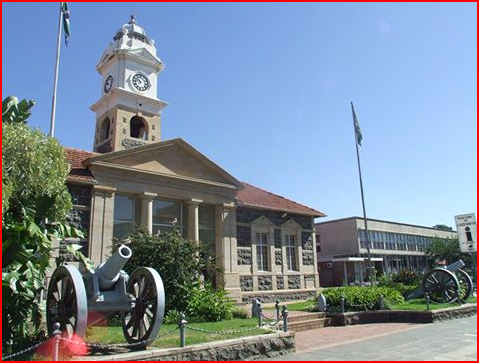
Ladysmith is one of the most important industrial and commercial centres of the South African province of KwaZulu-Natal. Furthermore, it is also a town with a particularly fascinating history, with a range of substantial monuments and museums. Ladysmith located only about an hour or some 80 kilometres from the Central and Northern Drakensberg. Tourists staying in the Drakensberg should consider visiting this town while spending time in the Drakensberg.
In the early years interestingly, Ladysmith was initially a Boer settlement and was known as the Republic of Klip River. Also the British annexed it in the 1850s and initially referred to it as the town of Windsor. Subsequently, this name changed as a tribute to the Spanish wife of Sir Harry Smith, one of the Governors of the Cape Colony (Lady Smith).
Ladysmith gained recognition ‘on the World Map’ at the beginning of the ‘Second Anglo Boer War’ or ‘The South African War’. Lieutenant General Sir George White made Ladysmith his centre of operations after having to retreat from a serious of very fierce skirmishes with the Boer Forces.
The Boer forces then decided to besiege Ladysmith. This blockade lasted 118 days. It commenced on the 2 November 1899 and continued to the 28 February 1900 Approximately 3,000 British soldiers died during this incident. Also, the residents of this town suffered terribly from a lack of food and constant bombardment from the Boers.
General Sir Redvers Buller made four attempts to break the Siege. Finally, after the Battle of Thukela Heights, he managed to break the blockade. However, he had to face defeats at: 'Colenso; Spionkop and Vaal Krantz'. Besides these battles, Commandant-General Piet Joubert attempted to capture the town before the British could launch another attempt to break the blockade. Known as the Battle of Platrand or Wagon Hill. Fortunately for the British, they managed to stave off the efforts of the Boers.
Some iconic personalities involved in the relief of Ladysmith were the war correspondent Sir Winston Churchill and the then stretcher-bearer, Mahatma Gandhi.
Key attractions-
Ladysmith has a range of must-see attractions:
- Firstly, the Siege Museum. This museum provides a fascinating overview of the Siege of Ladysmith, and the battles fought to relieve this town. The Google map reference is https://goo.gl/maps/7jxMogPHHNqFoXWW8
- Secondly, Platrand/Wagon Hill – The Burgher Memorial, erected in honour of the Boers who died in battle in the near vicinity of Ladysmith;
- Also, Castor and Pollux in front of the Ladysmith Town Hall. These are two Howitzers used by the British during the Siege in front of the Town Hall. Google map reference;
- Mahatma Gandhi statue. This statue located at the Lord Vishnu Temple. Google map reference; and
- The Ladysmith Black Mambazo Museum.

Ezakheni was one of the large townships of KwaZulu outside of the metropolitan area of Durban with a population estimated to be around 50 000 during a survey conducted by the Surplus People’s Project (SPP). The area was earmarked as an “industrial development point” which was part of the government’s new decentralisation proposals of April 1982. The Ladysmith Chamber of Commerce and the Town Council both touted its workers as the largest labour force in the province. Ezakheni was created to accommodate and control Ladysmith’s labour force and their families within KwaZulu.
https://thedrakensberg.net/ladysmith/
Editorial (1979), ‘EZAKHENI’, from Editorial Vol.11 No.6, November [online] Available at www.disa.ukzn.ac.za[Accessed: 15 March 2013]|
Forced Removals In South Africa – The Surplus People’s Reports Report Vol. 1, January 1983, p.15|
Forced Removals In South Africa – The Surplus People’s Reports Vol.4, (Natal), January 1983, pp.332-333,335,337&350